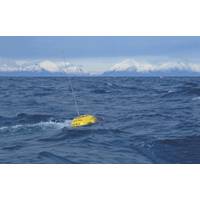
Wave Buoy Measurements on a Hexapod
and degrees of freedom. Additionally, we have learned a lot about the buoy properties and limits, and gained valuable experience in the measurement procedures with the hexapod. The Author Sanne van Essen is Project Manager at the Business Unit Ships at MARIN, the Maritime Research Institute Netherlands. (As published in the January/February 2018 edition of Marine Technology Reporter

New C-DRONE for Undisturbed Wave Spectrum Measurements
will be performed in the North Sea to evaluate practical issues and performance in seas. After successful trials it will become standard equipment for speed and power trials. The Author Thijs Hasselaar is Project Manager at the Business Unit Trials & Monitoring at MARIN, the Maritime Research Institute Netherlands.
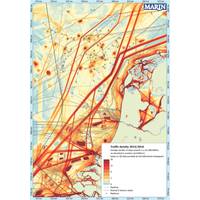
Marine Hazards to Subsea Cables and Pipelines
export cables connecting offshore wind farms to the Dutch coast, an interconnector cable between the U.K. and Denmark, and a large diameter gas pipeline between The Netherlands and the U.K. The Author Yvonne Koldenhof is Senior Project Manager at the Nautical Centre of MARIN, the Maritime Research Institute Netherlands. (As published in the August 2017 edition of Maritime Reporter & Engineering News
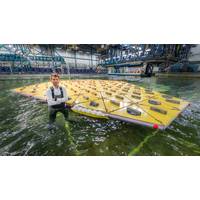
First Floating Mega Island Tested
Floating ports and cities possible solutions to sea level rise and overcrowded cities MARIN (Maritime Research Institute) tested an innovative concept for a floating mega island. The island comprises 87 large floating triangles that are flexibility connected to one another. Together they form a flexible floating island that can be as large as 1 to 5 km in cross-section. Olaf Waals, project manager and the concept developer: “As sea level rises, cities become overcrowded and more activities are carried out at sea, raising the dikes and reclaiming land from the seas are perhaps no
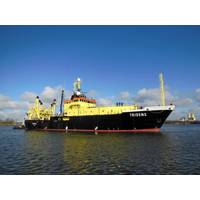
Damen Refits Fisheries Research Vessel
. Tridens underwent a major midlife conversion to boost the vessel’s multifunctional capabilities for fisheries research, including installation of a ‘drop keel’. The Rijksrederij is the custodian of the North Sea and manages a fleet of specialist vessels. The maritime research institute IMARES, in collaboration with other European fisheries institutes, employs Tridens (73.5 meters in length and 14 meters beam) to help determine fish stocks in the North Sea, among other duties. Looking to increase efficiency in employing the 25-year-old Tridens, the Rijksrederij

Barge Master Platfrom Contracted by Boskalis
; Barge Master develops and produces wave compensated platforms for the marine and offshore / near shore construction industry. Motion compensation platforms for cranes or supply barges are typical examples of Barge Master applications. Developed together with Bosch Rexroth and Marin maritime research institute, Barge Master provides : • Increased safety during offshore lifting and supply operations • Increased workability during offshore lifting and supply operations •
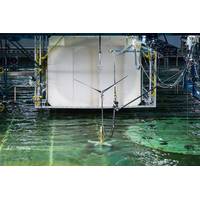
Offshore Wind Floating TLP Model Tests Complete
are being used to further demonstrate PelaStar’s technical feasibility and to calibrate state-of-the-art software used to design, analyze, and optimize the floating wind turbine system. The 1:50-scale floating wind turbine model was tested in the world class offshore basin at the Maritime Research Institute Netherlands (MARIN). For this test, the PelaStar TLP was optimized for MARIN’s in-house test turbine, which models a 5MW turbine with a 126-meter rotor diameter. The test model design was based on a full- scale platform designed in accordance with the new DNV standard for floating
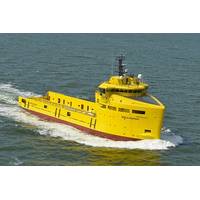
Damen PSV Delivered to World Wide Supply
been very happy with the cooperation with Damen on the build and with the quality and construction undertaken by the yard in Galati.” Delivery of the new design involved extensive CAD/CAM modeling by Damen Shipyards Gorinchem in the Netherlands and rigorous model testing at MARIN (Maritime Research Institute Netherlands). The PSV 3300 is one type within the new range of Damen PSV’s. The 80.1m length PSV 3300 has a deck load of 1,500 tons will undertake crew and materials transport to and from offshore platforms but also offers fire-fighting and oil pollution recovery capability. Equipped



 February 2024
February 2024





